Day 1: Arrival in Paro, Transfer to Thimphu
Begin in Paro, then head to Bhutan's capital, Thimphu. Visit key sites like Tashichho Dzong and the Buddha Dordenma Statue.
Day 2: Explore Thimphu
Dive into Thimphu's cultural offerings with visits to museums, the School of Arts & Crafts, and other landmarks showcasing traditional Bhutanese craftsmanship.
Day 3: Journey from Thimphu to Punakha
Pass through Dochula Pass with its panoramic Himalayan views, then explore Punakha Dzong and nearby Chimi Lhakhang.
Day 4: Travel to Phobjikha Valley
Discover the unspoiled beauty of Phobjikha Valley, home to the seasonal black-necked cranes and the historic Gangtey Monastery.
Day 5: Return to Paro
Travel back to Paro, where you'll visit Rinpung Dzong and Ta Dzong, the National Museum of Bhutan.
Day 6: Hike to Tiger's Nest Monastery
Undertake a rewarding hike to the Tiger's Nest Monastery, a must-see site for its spiritual significance and incredible views.
Day 7: Departure
Transfer to Paro Airport, marking the end of a memorable Bhutan experience
Discover the agency :
Bhutan Travel Gate
7 days
From : €1,490*
Maximum recommended reservation date
30/12/2027
Suraj Chhetri
This 6-night, 7-day Bhutan itinerary offers an immersive journey through Bhutan's enchanting landscapes, ancient monasteries, and vibrant culture. From the bustling yet tranquil capital of Thimphu to the serene valleys of Punakha and Phobjikha, and the awe-inspiring Tiger's Nest Monastery in Paro, this tour captures Bhutan's essence in a compact timeframe.
Cultural Exploration: Discover Bhutan's rich heritage through its dzongs (fortresses), traditional arts, and unique spiritual landmarks.
Natural Beauty: Journey through lush valleys, breathtaking mountain passes, and pristine landscapes, with highlights at Dochula Pass and Phobjikha Valley.
Spiritual Connection: Visit revered temples like Chimi Lhakhang and the iconic Tiger's Nest, perched dramatically on a cliffside.
Local Experience: Enjoy local crafts, markets, and the warm hospitality of the Bhutanese people.
Day 1: Arrival in Paro and Paro-Thimphu (Distance: 54 km, estimated journey time: 1 hour)
Day 2: Visit to Thimphu
Day 3: Thimphu-Punakha (Distance: 71 km, estimated journey time: 2 h 30)
Day 4: Punakha to Gangtey (Distance: 73 km, estimated driving time: 2 hours)
Day 5: Gangtey - Paro (Distance: 179 km, estimated driving time: 5hr 35 mins)
Day 6: A day's hike to Taktsang Ghoempa (Tiger's Nest Monastery)
Day 7: Departure from Paro

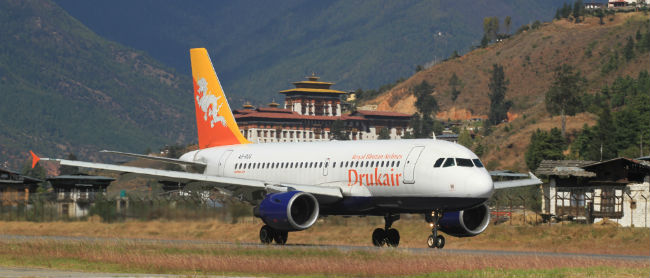 ©Bhutan Travel Gate
©Bhutan Travel Gate
Fly to Paro with DrukAir / Bhutan Airline After completing your immigration formalities, you will be welcomed by our representative who will guide you throughout your visit. You will then travel to Thimphu. On arrival in Thimphu, check into your hotel and after refreshments, visit the following sites:
- Kuensel Phodrang and visit the tallest Buddha statue and enjoy the full view of the Thimphu valley below.
- Craft Bazaar - A unique place to discover Bhutanese culture and buy arts and crafts made in Bhutan. With 80 stalls, the Bazaar covers all aspects of traditional Bhutanese arts and crafts. In this bazaar, craftsmen and artisans from all over the country display and sell their handicrafts. You can also visit other craft shops.
- Tashichhoe Dzong, a fortress of glorious religion. It was built in 1641 by Zhabdrung Ngawang Namgyel and rebuilt in its present structure by the late king, His Majesty Jigme Dorji Wangchuck, between 1962 and 1969. It houses the secretariat building, the throne room and the king's office, as well as the central body of monks. Overnight in Thimphu
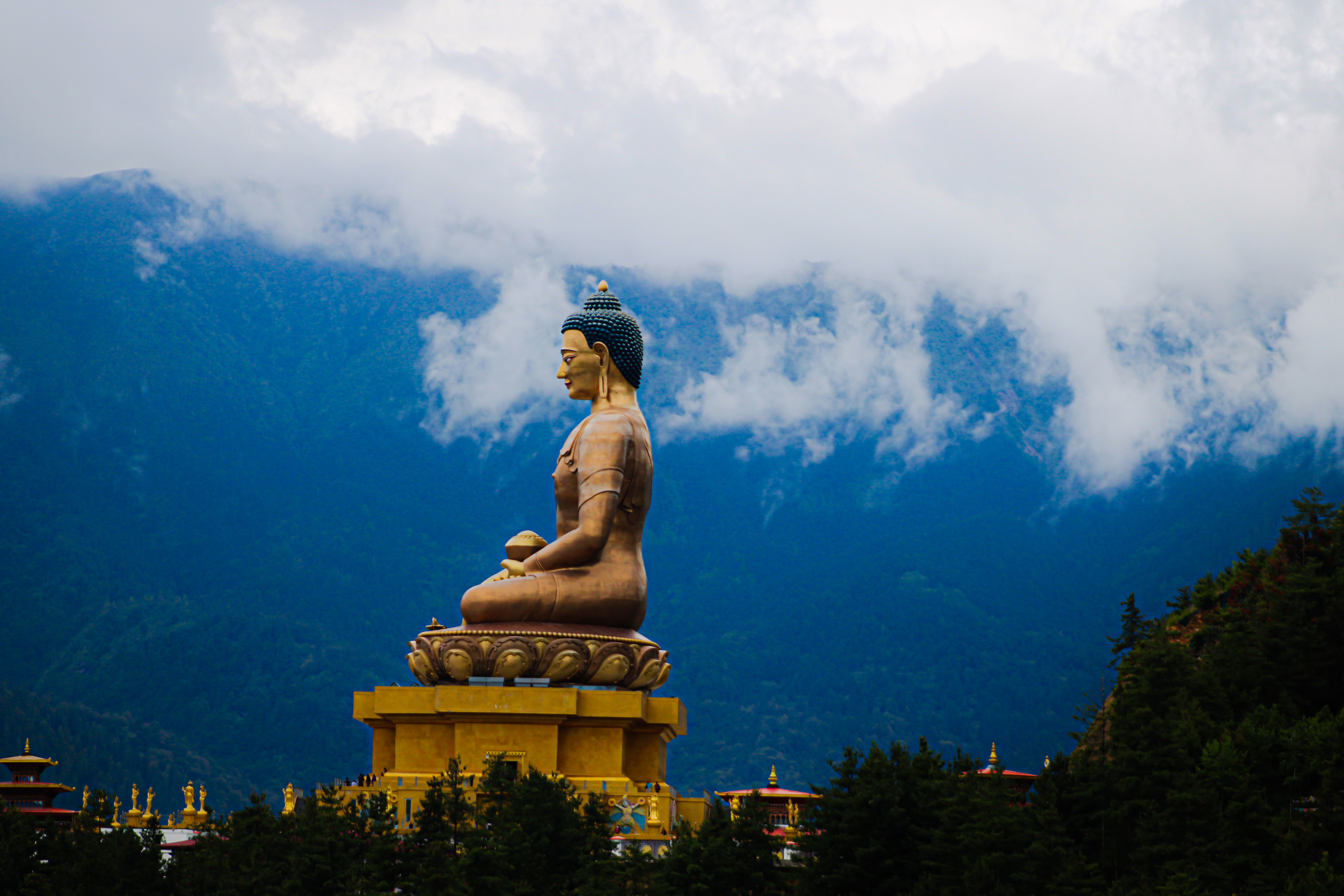 ©Bhutan Travel Gate
©Bhutan Travel Gate
After breakfast, we visit the Takin Preserve:
Takin Preserve, home to the national animal the Takin, found only in Bhutan. It is an extremely rare member of the goat family. Found in herds at very high altitudes (13,125 feet and above). They live on a diet of grass and bamboo. They can weigh up to 550 pounds.
Weaving Centre The Gagyel Lhundrup Weaving Centre is a small cottage industry offering a variety of traditionally hand-woven Bhutanese garments and other textile products.
Institute for Zorig Chusum Commonly known as the Arts & Crafts School or the Painting School, the Institute offers a six-year course in Bhutan's 13 traditional arts and crafts. On a visit, you can see students learning the various skills taught at the school.
Weekend market Every Saturday and Sunday, most of Thimphu's small population and many of the valley's inhabitants gather on the banks of the river where the weekend market is held. It's an interesting place to visit and offers an opportunity to mingle with the local population.
Bhutan's national sport (archery) One of the best places to watch a game of traditional and modern archery. What is Bhutan's national sport? If you want to take good photos of an archery match, this is one of the best places to go. Almost all the time, there's a tournament going on Overnight in Thimphu
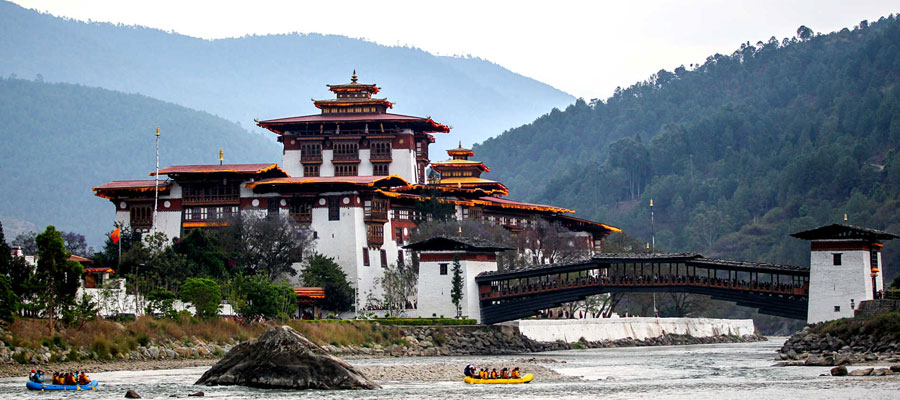 ©Bhutan Travel Gate
©Bhutan Travel Gate
After breakfast, travel to Punakha, passing through the Dochula Pass (3,140 m). In the clear spring sky, you can enjoy panoramic views of the Himalayan mountain ranges. Then, pass by the stunning 108 chortens built on the hill by Her Majesty Ashi Dorji Wangmo Wangchuck (Queen Mother of Bhutan) for the safety and well-being of His Majesty, the King of Bhutan.
You will also visit the Druk Wangyal Lhakhang (monastery), which was built by Ashi Dorji Wangmo Wangchuck (the Queen Mother of Bhutan) in honor of His Majesty the Fourth King of Bhutan, Jigme Singye Wangchuck, and the armed forces after His Majesty led a successful operation against Indian militants who had occupied certain areas of Bhutan. The gallery at Druk Wangyal Lhakhang features magnificent frescoes depicting significant events from the reigns of the Kings of Bhutan. Then, continue your journey to Punakha. Punakha has been closely tied to some of the most significant events in Bhutanese history and deserves its reputation as one of the most beautiful and culturally significant regions in Bhutan. Punakha served as the capital of Bhutan from 1637 to 1907. The dzong is historically important and represents a unified Bhutan.
On the way, stop for lunch in the village of Metsina, then visit the Monastery of the Divine Madman, Chhimi Lhakhang, famous for its fertility shrine, where one can receive a special fertility blessing.
Next, visit the Punakha Dzong, located on the island between the Pho Chu (male river) and the Mo Chu (female river). The dzong was built in 1637 by Zhabdrung Ngawang Namgyal to serve as the religious and administrative seat of the region. At the dzong, you can observe the highest standards of woodwork craftsmanship.
In the evening, visit the villages of Rinchengang and Lobesa, where you can take a short walk through the village and interact freely with the villagers. Overnight stay in Punakha.
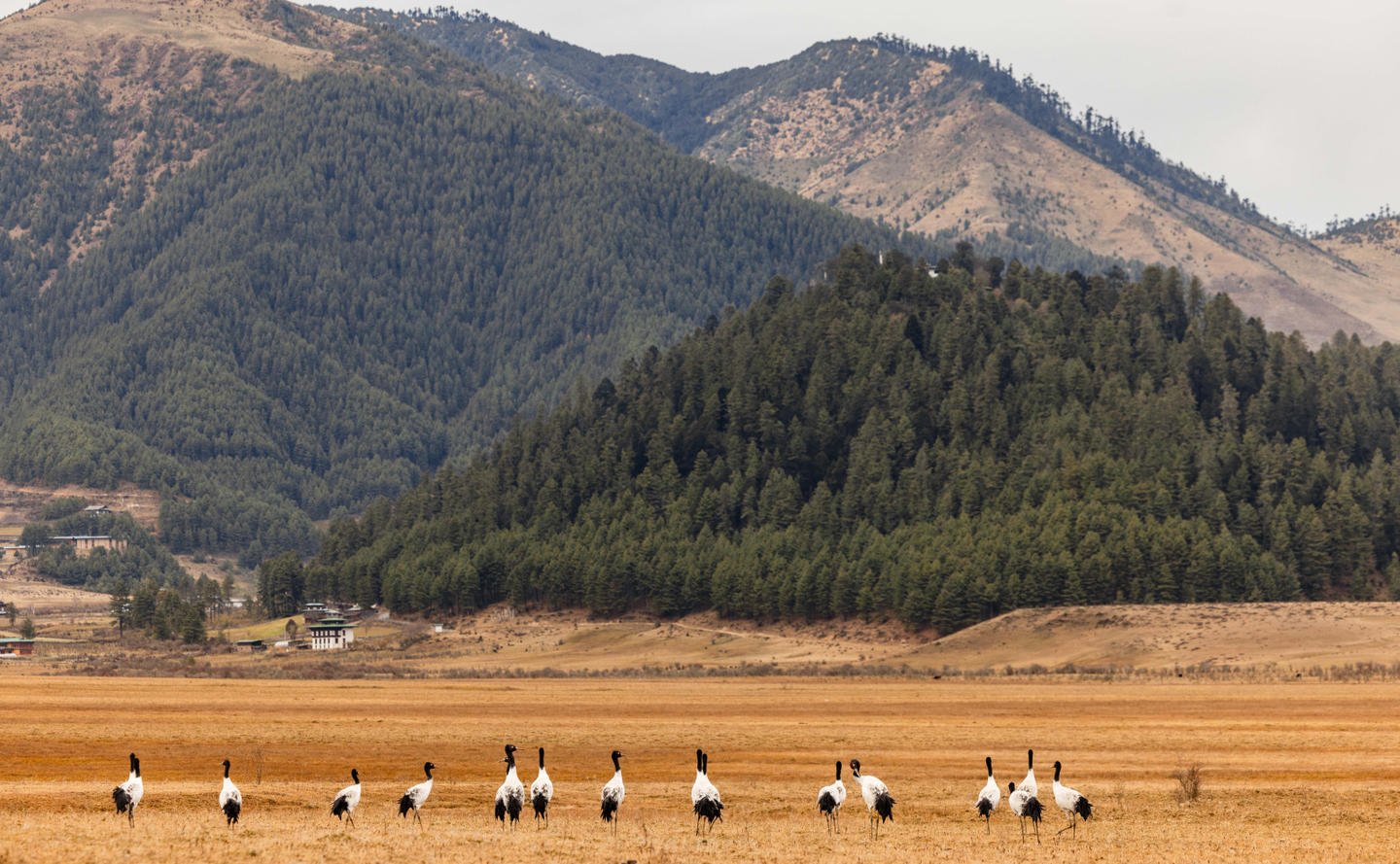 ©Bhutan Travel Gate
©Bhutan Travel Gate
After breakfast, drive to the Gangtey valley. It is located in the beautiful and wide U-shaped glacial valley of Phobjika. After arrival, check into the hotel and later, after lunch, we'll hike the nature trails.From the small peak overlooking Gangtey Goemba, descend through flower-filled meadows to the village of Semchubara and from there through beautiful forests and into the open valley. After passing a chorten and the Khewa Lhakhang, the trail ends at the local community school; this involves a 30-minute walk to the start of town.
Tibetan Crane Information Centre
Located on the edge of the forest and wetlands along the main Phobjikha Valley road, the Black-necked Crane Information Centre has an observation room equipped with powerful telescopes and spotting scopes to capture the best view of the cranes. The centre also has information displays describing the natural and cultural history of the area. There is a small souvenir shop, selling handicrafts produced by local people.
Overnight in Gangtey
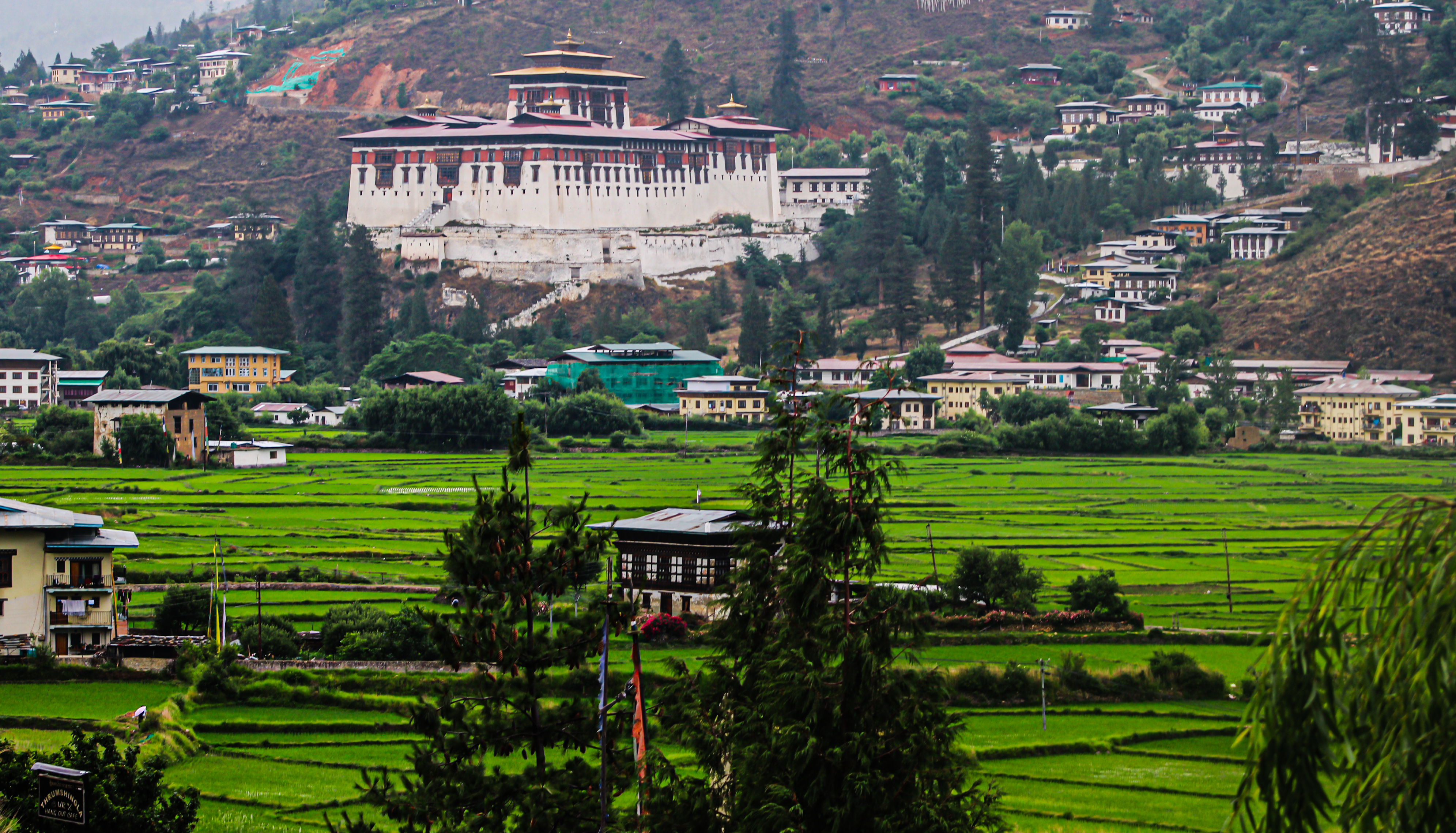 ©Bhutan Travel Gate
©Bhutan Travel Gate
After breakfast, travel to Paro. On the way, visit the following places:
Tamchog Lhakhang Bridge Located across the river from the Thimphu-Paro highway, you’ll need to cross a chain-link iron suspension bridge to reach the Lhakhang. About a 30-minute drive from Paro toward Thimphu, Tamchog Lhakhang is situated on the other side of the Paro River and is accessible via an iron chain suspension bridge. The Lhakhang and bridge were built by a 13th-century Tibetan saint, Thangthong Gyalpo, who was also a blacksmith and architect. Of the many iron chain bridges he constructed, only a few remain in use today. Crossing this historic bridge can be a thrilling experience for tourists. Some of the original iron chains used in its construction are displayed at the National Museum in Paro.
Overview of Paro Airport Paro International Airport is the only international airport in Bhutan, providing the sole aerial entry point to the country. It’s a small airport with a single runway and minimal international traffic, yet it is regarded as one of the most challenging airports for landing and one of the most beautiful, thanks to its stunning scenery and architectural design.
Hotel Check-In and Later Visit to the National Museum
In the evening, take a stroll through Paro town and explore the local craft shops.
Overnight stay in Paro.
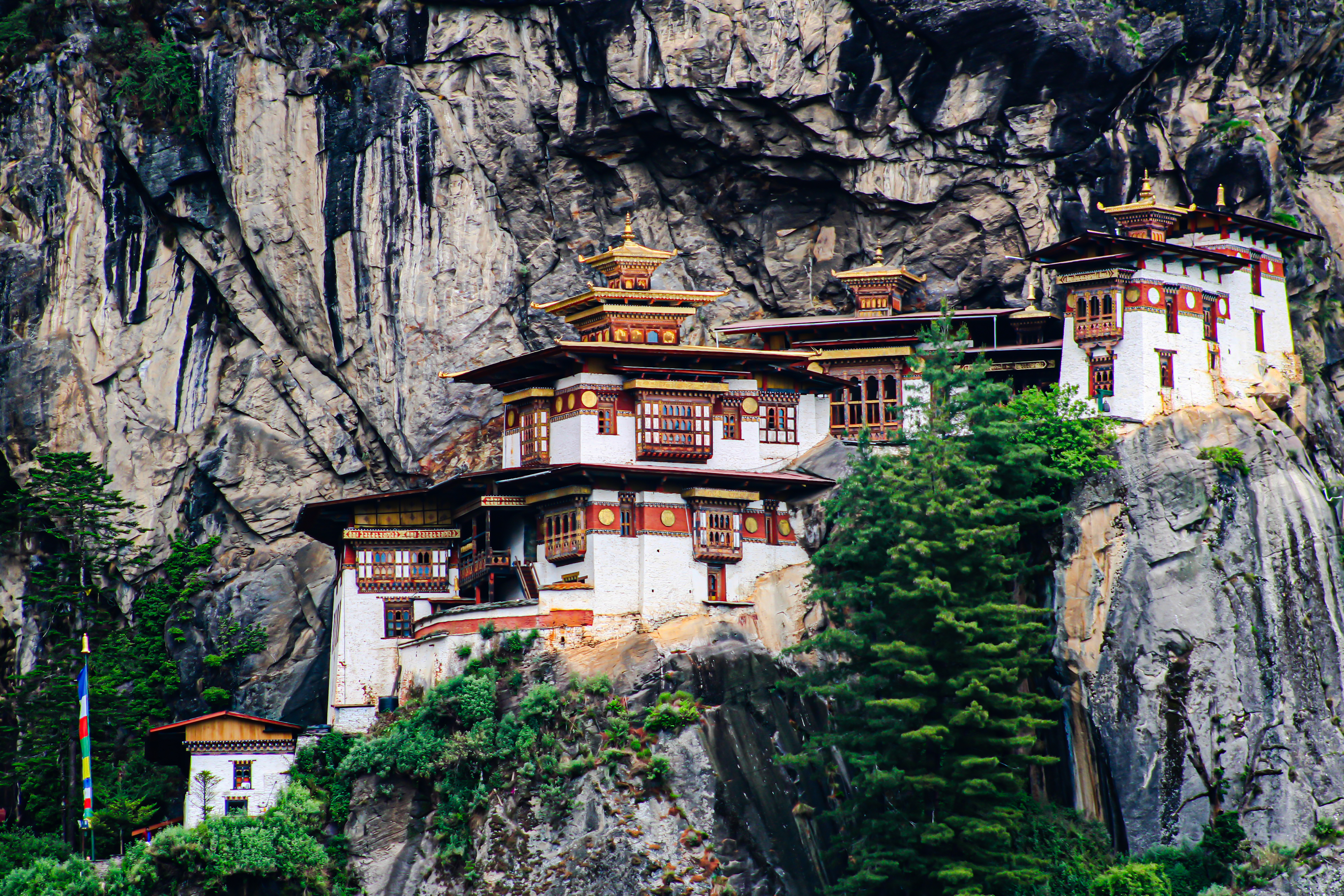 ©Bhutan Travel Gate
©Bhutan Travel Gate
After breakfast, hike to Taktsang Monastery, also known as the Tiger's Nest. The walk to the viewpoint will take around 1 to 1 ½ hours depending on your fitness and from the viewpoint you will enjoy a spectacular view of the monastery clinging to the cliffside. Stop for a snack at the viewpoint cafeteria. Then walk a little further up to the monastery, which will take around 1 hour.
It is said that in the 8th century, Guru Rinpoche flew on the back of a tigress from eastern Bhutan to this spot and meditated in a cave here for 3 months. The main Lhakhang (monastery) of the current monastic complex dates from 1692. Taktsang was badly damaged by fire in 1998, but has now been fully restored to its former glory. After visiting the monastery, walk down the hill to the road, stopping for lunch at the viewpoint café on the way, then continue down to the road point.
Overnight in Paro
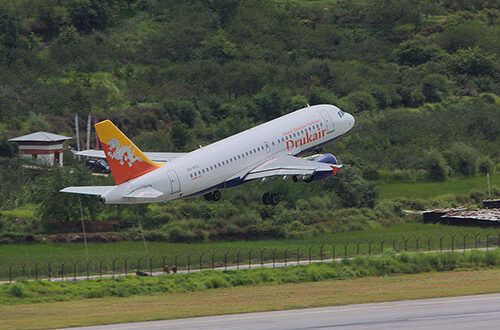 ©Bhutan Travel Gate
©Bhutan Travel Gate
After breakfast, we drive to Paro airport for departure.




Each Travel Idea is customizable according to your wishes

